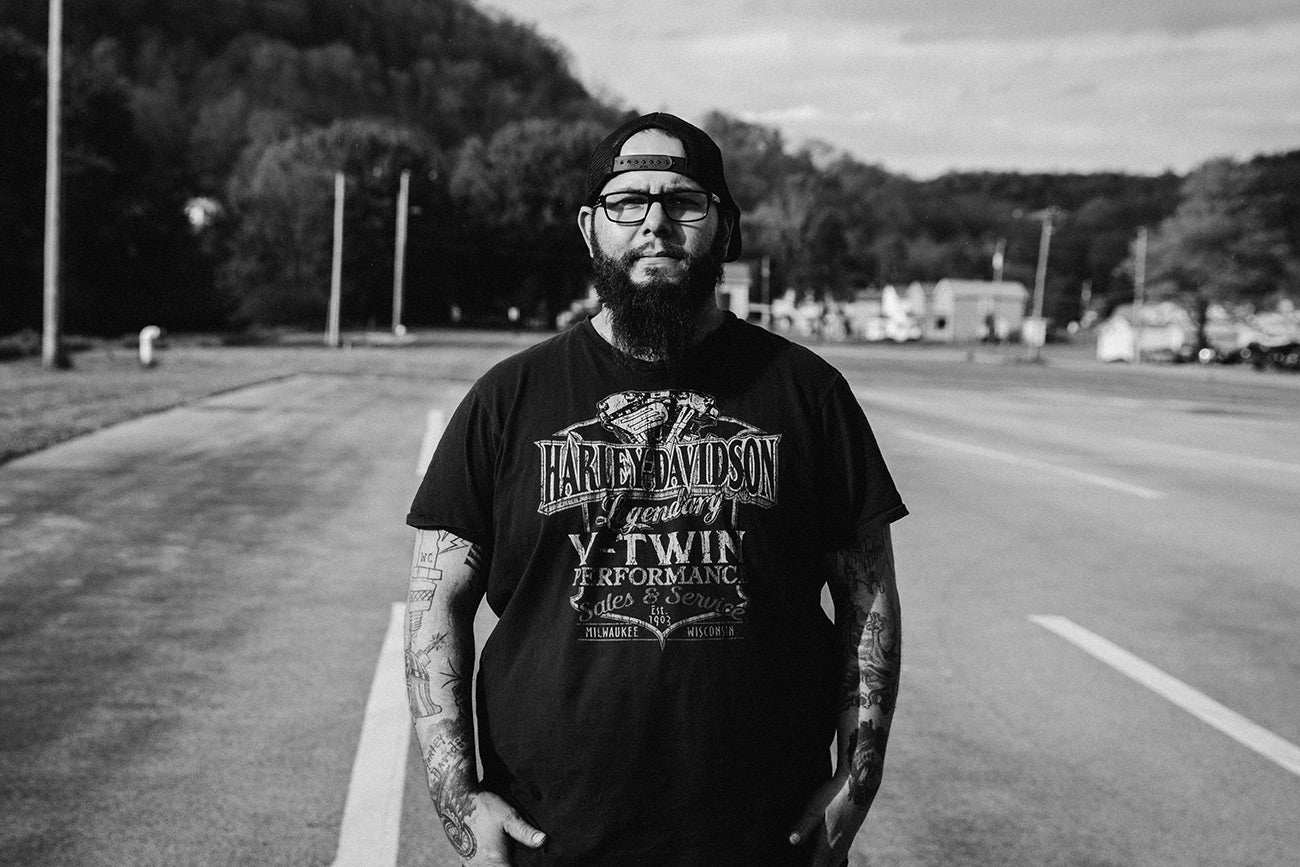Evo-powered tribute build
Riding off-road throughout his childhood while being inextricably surrounded by Harley-Davidson motorcycles made it certain that Pauly Covel’s interest in big twins would develop into something greater. His brother, Tony, mentioned that since he was young Pauly had a knack for fixing things around the house. Tearing objects apart, studying the pieces, and then putting them all back together was simply his way of understanding the mechanics and functionality of household tools. Pauly is a welder by day, but on the side he runs a small garage called Scumbag Cycle Co. in Clymer, Pennsylvania. With no intention of making it a full-time job the garage has become his creative outlet and a way to decompress after a long week. "I'm a simple kind of guy. I don't want a million bucks," he says. "I just want to pay my bills, get by, and enjoy life.”
Pauly Covel inside the Scumbag Cycle Co. garage.
Sometimes a build becomes more than just a motorcycle, developing further into an expressive effort to remember someone significant from our past. This person could have been a direct influence on the types of bikes we ride or simply a guiding voice that helped us maneuver through life’s many obstacles. We all seem to do our best to cherish the special memories of those we’ve lost. For Pauly Covel, this inspiration came from his late mother, Roberta, for which he named his latest Harley Evo build after.



Initially just a box of parts, the 1999 Harley-Davidson EVO 80 inch engine was acquired for a steal when someone needed to sell it in order to purchase an engagement ring. Love does crazy things. After putting it back together with new Keith Black pistons and a Rev Tech 4-speed ratchet top transmission, the engine was fitted to a pan-shovel rigid frame. With his mother being the influence behind this bike, adding her favorite colors was imperative. Turquoise and Black Hills gold can be found throughout, with Pauly mentioning that she had a collection of Black Hills jewelry from Sturgis, South Dakota. He used polished brass to obtain the gold appearance, noting that working with the brass was one of the most challenging parts of the build. The fuel tank used a primer base, followed by a subsequent layer of turquoise and black, and finished by sanding areas for a classic patina look.
A number of other clever details took shape throughout the process, including a rear fender made from a 1932 Ford spare tire ring that was split in half. A brass shifter and 8 ball knob were made by hand, and a first generation knucklehead carburetor cover was acquired from an old-time biker named Einstein. When asked what the most rewarding part of the build was, Pauly took a moment before replying with simply, “Just looking at it when it was finished.” Roberta would be proud.

Pauly's arm, tattooed with Roberta's favorite H-D engine.

The turquoise and gold colors have a sentimental purpose.
HARLEY DAVIDSON EVO HARDTAIL
Built by PAULY COVEL
SCUMBAG CYCLE CO.
facebook | instagram


























